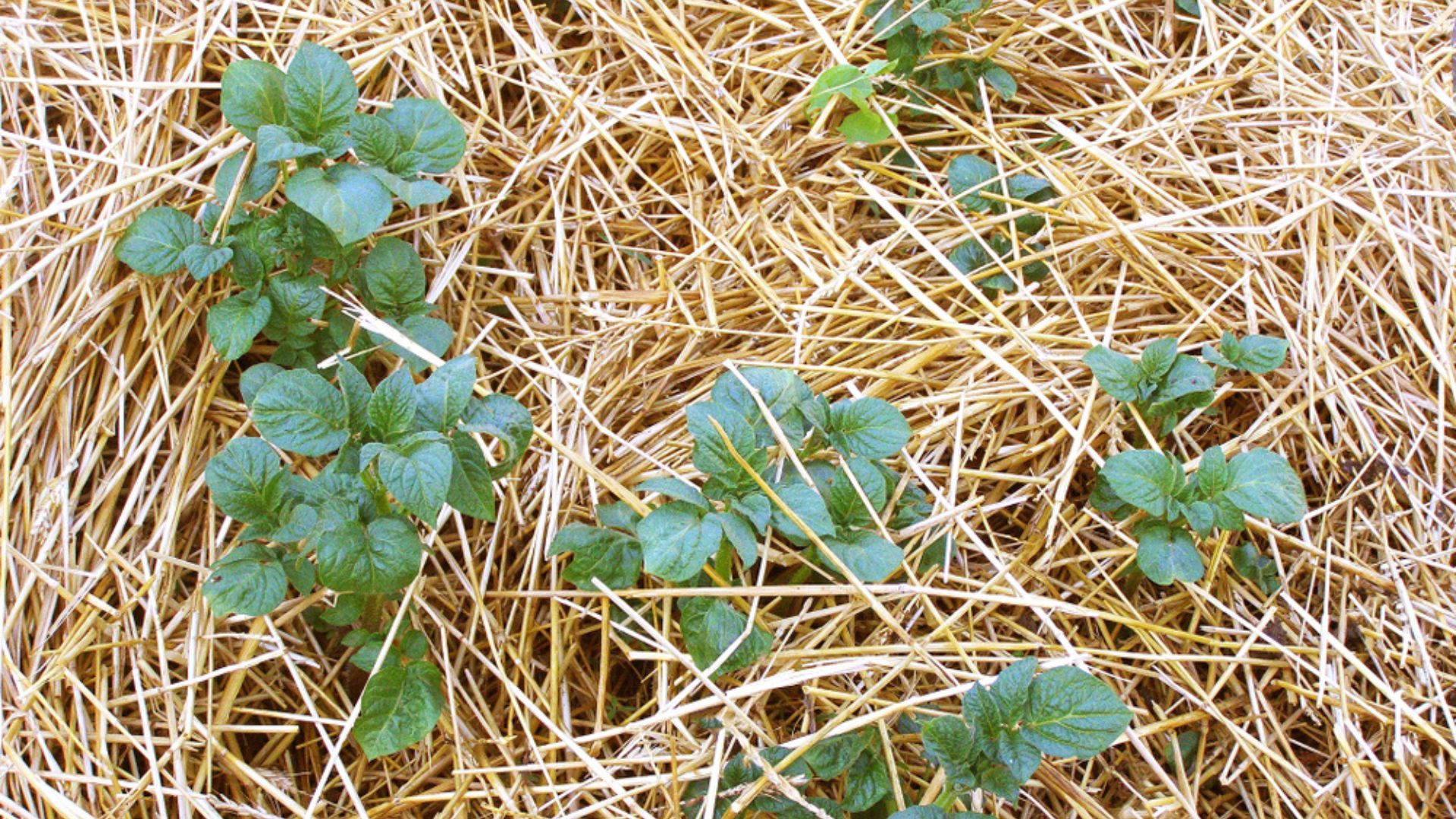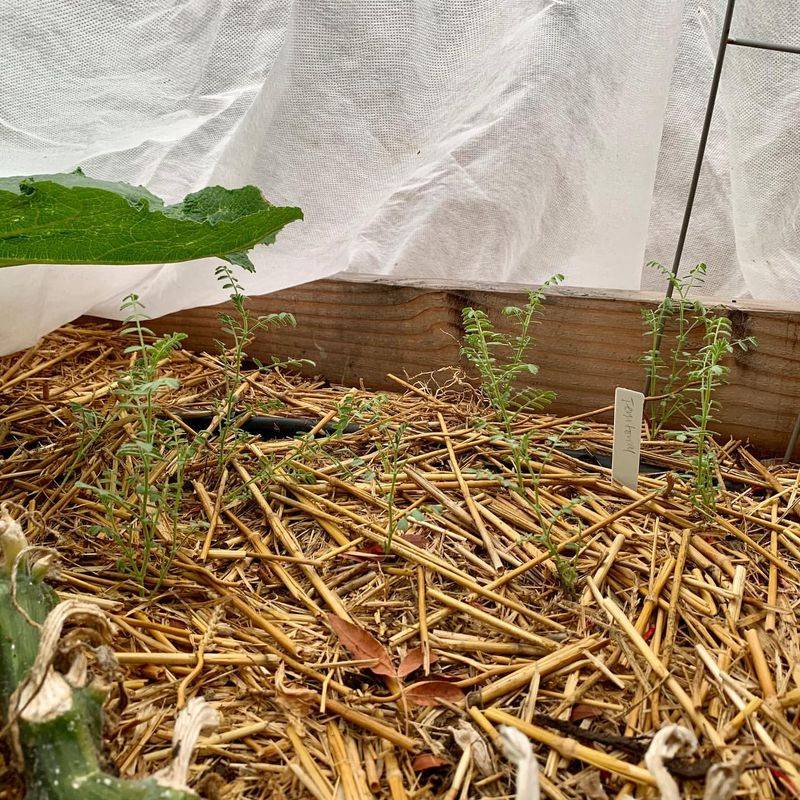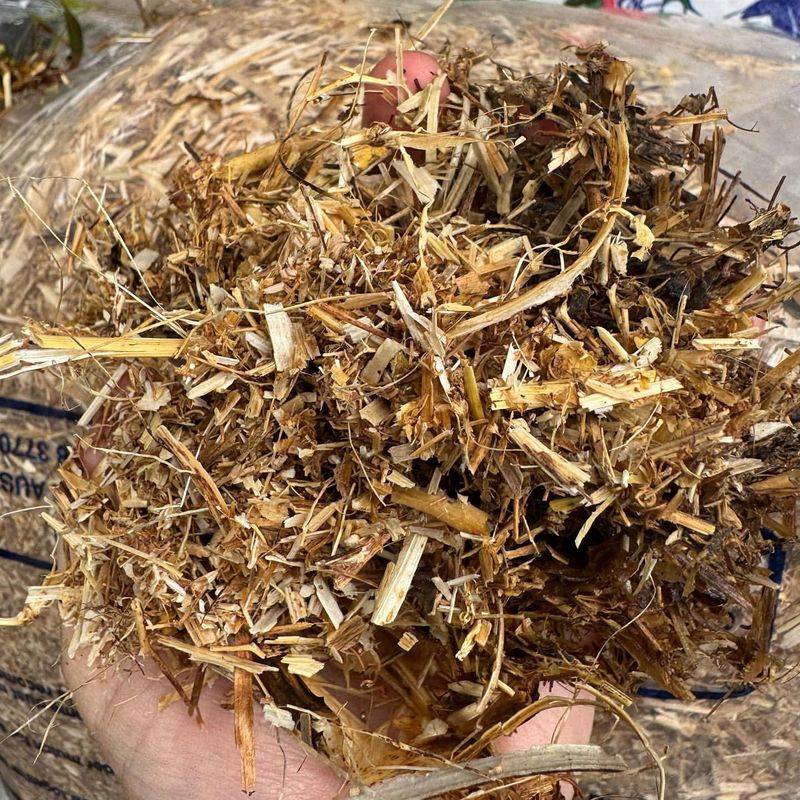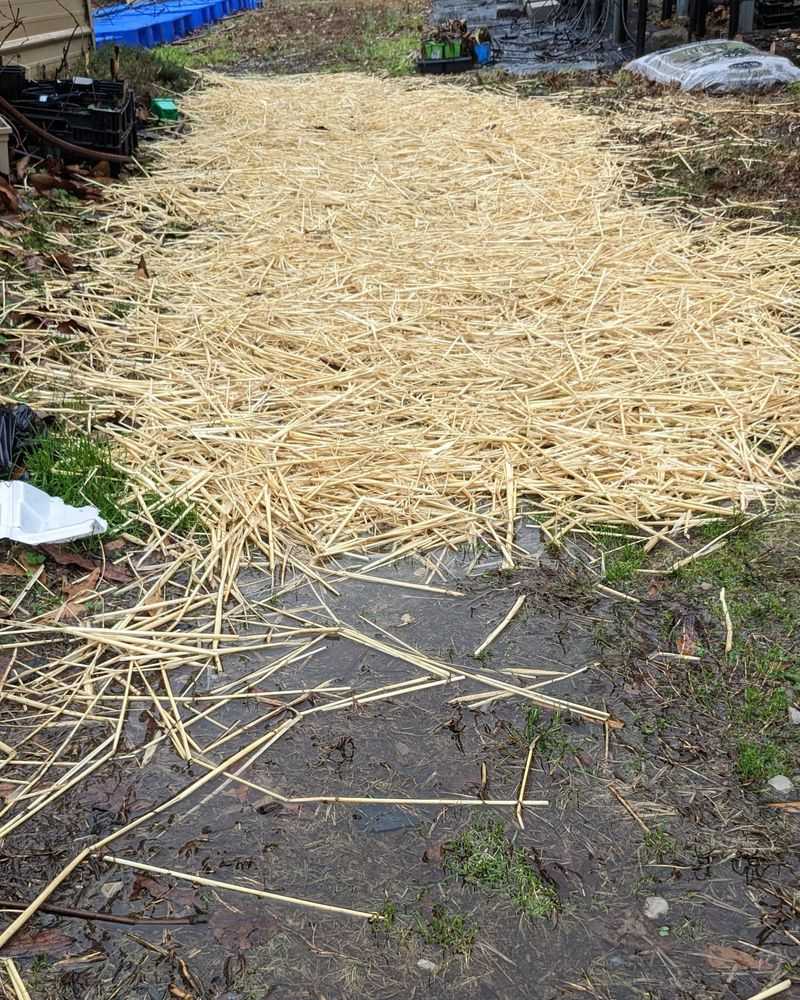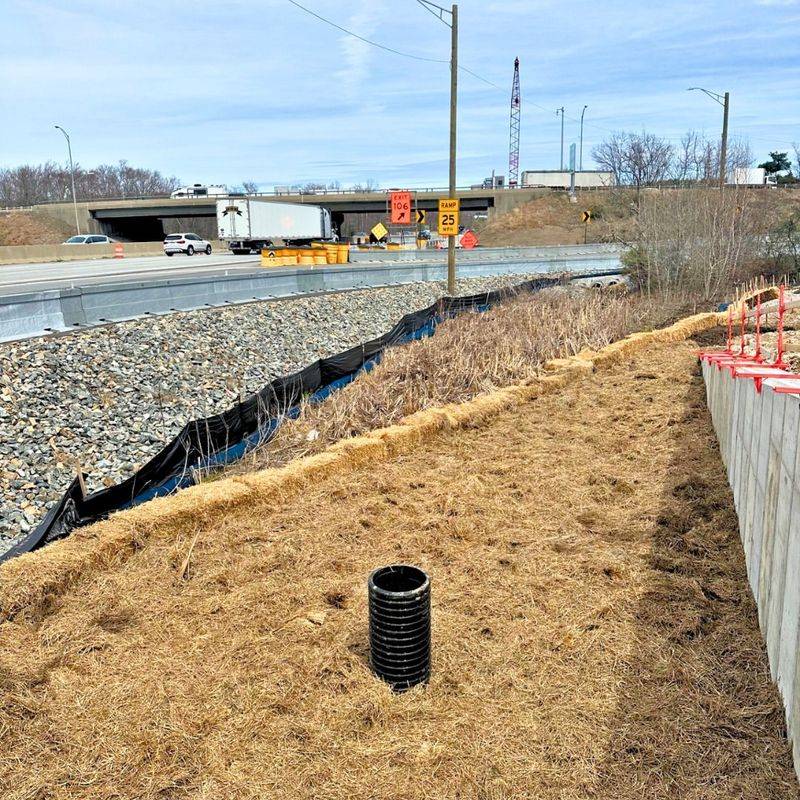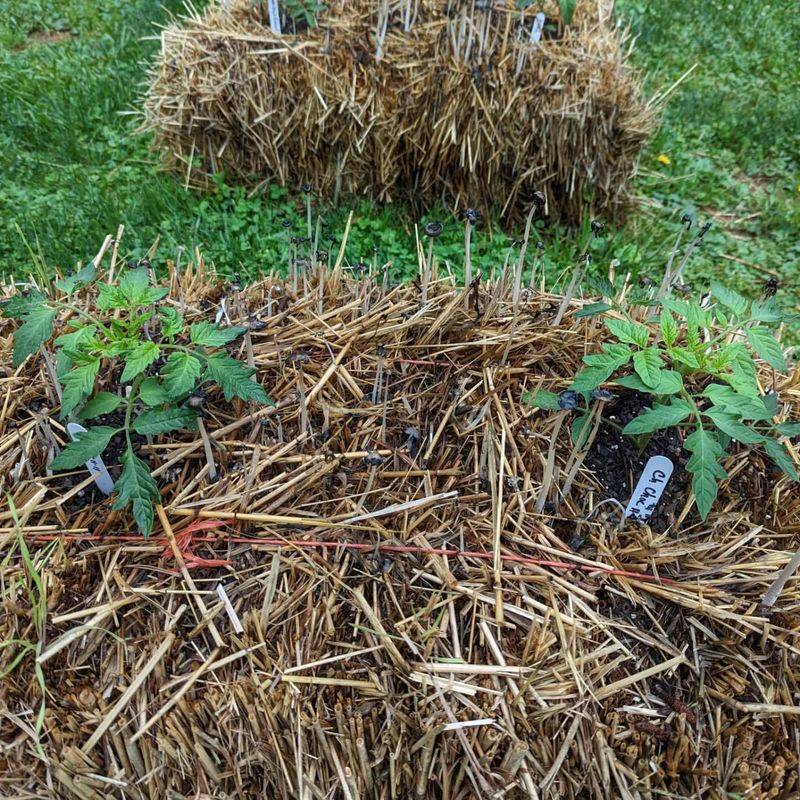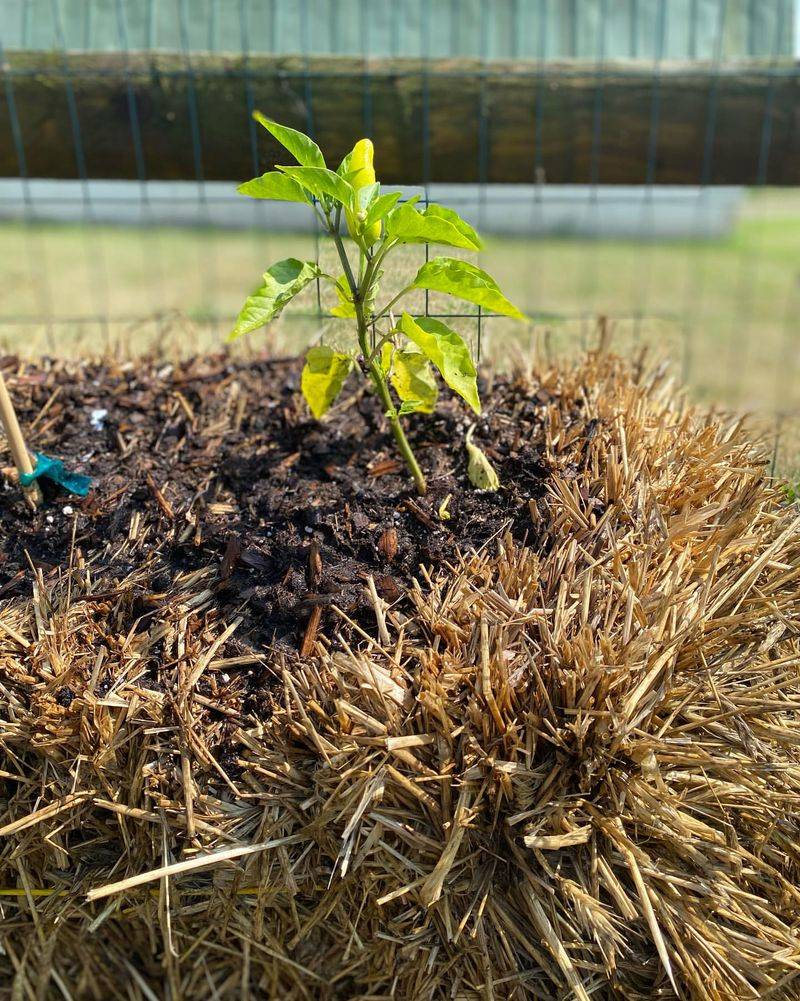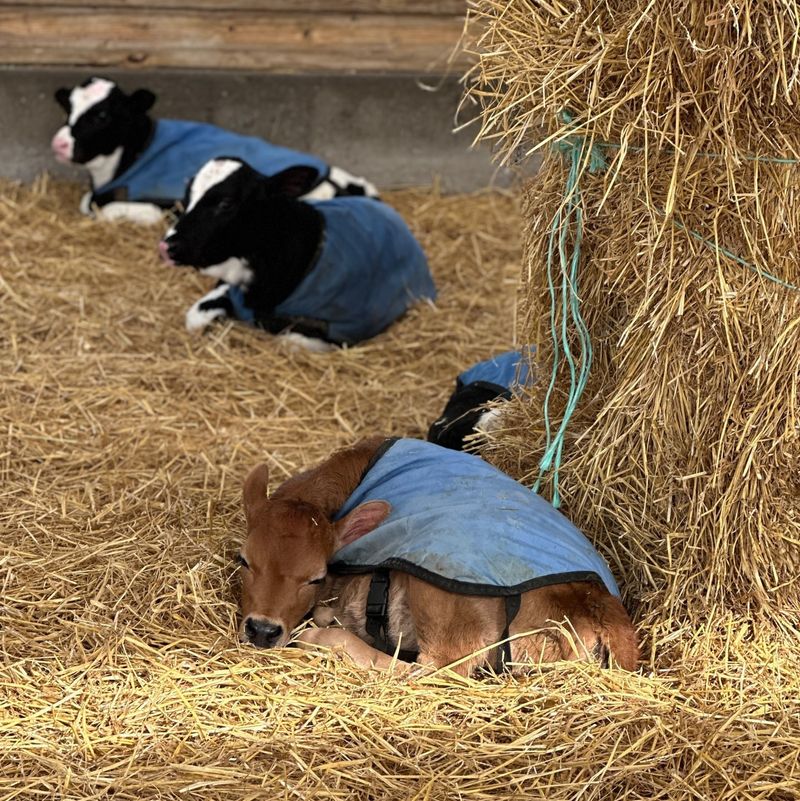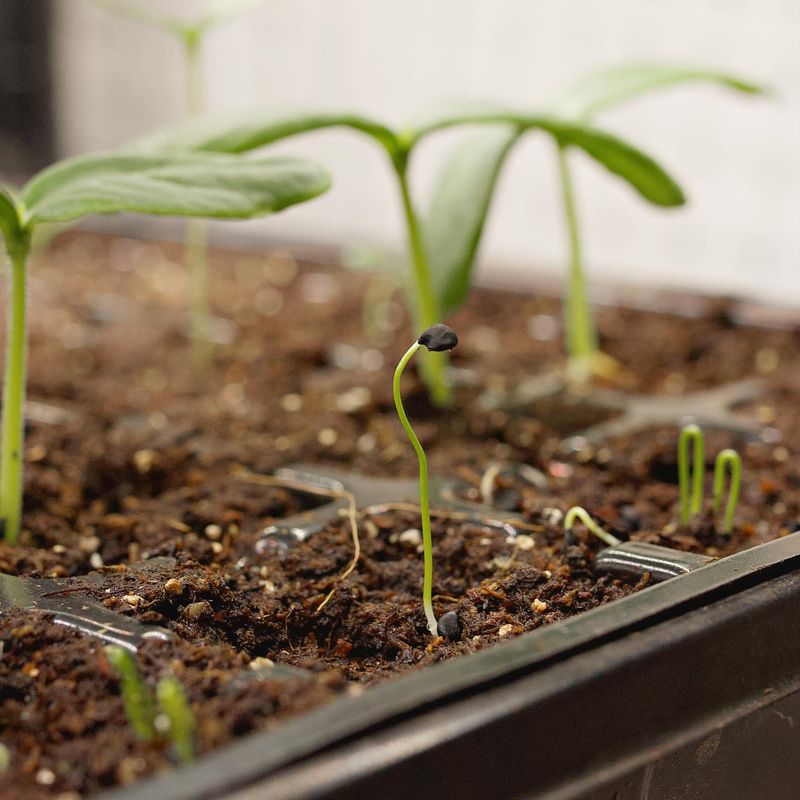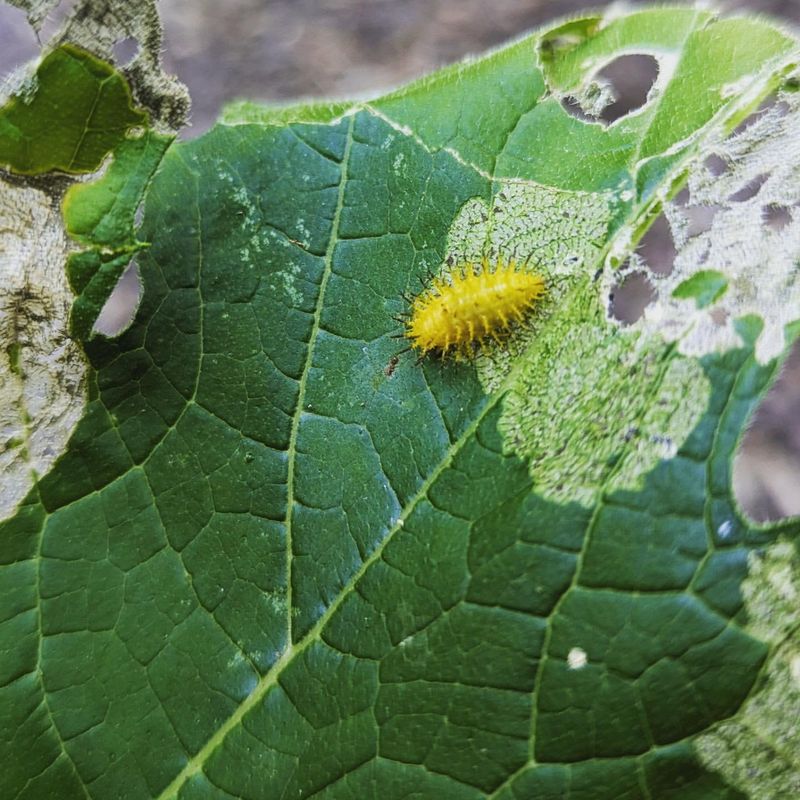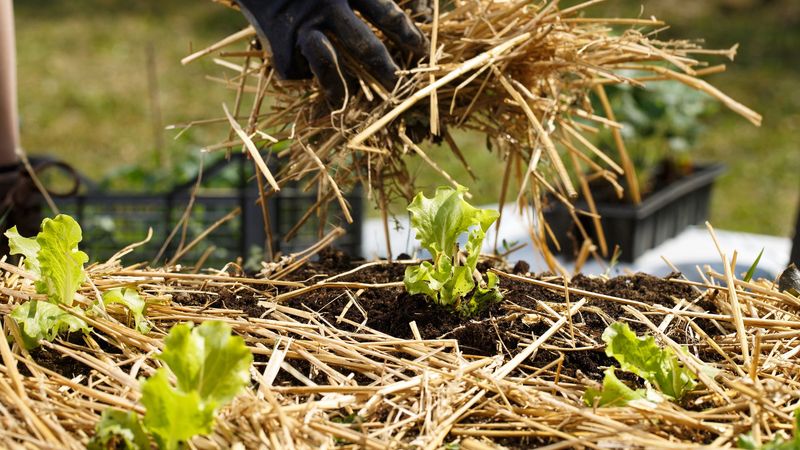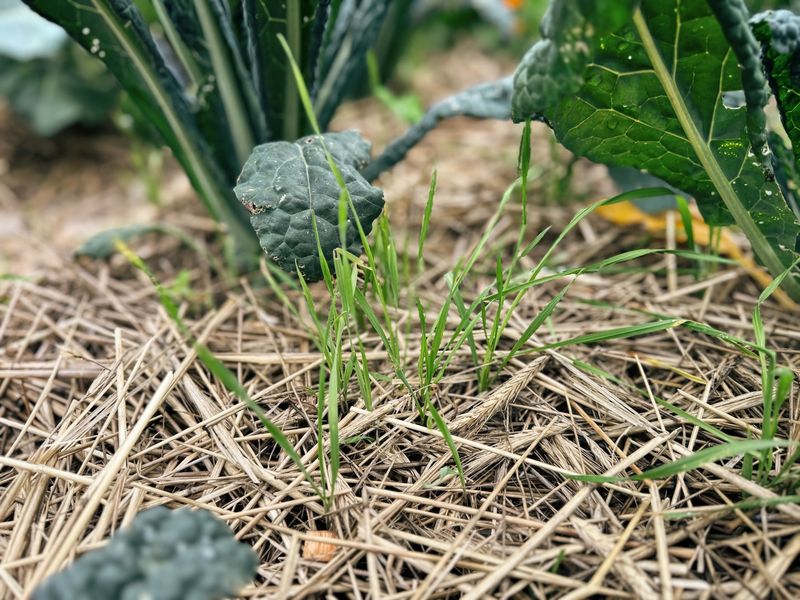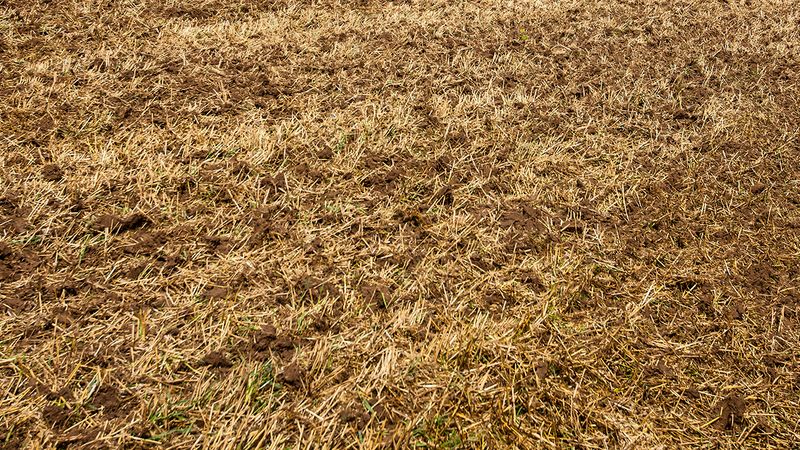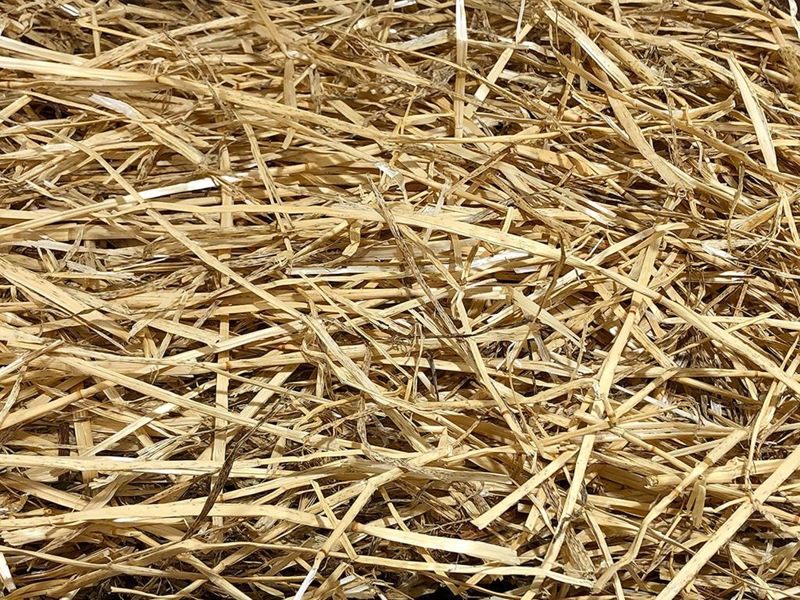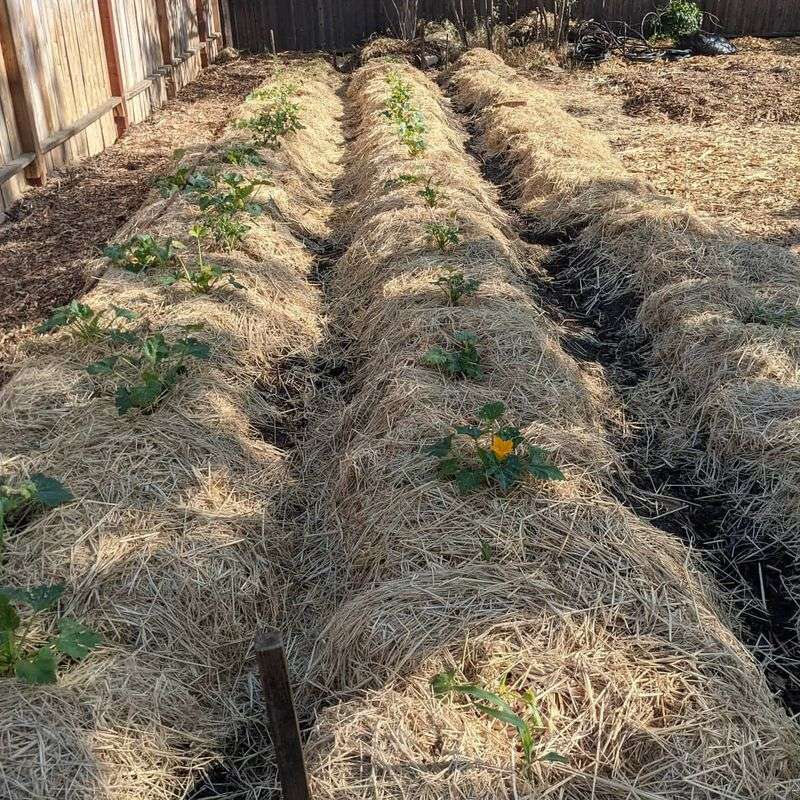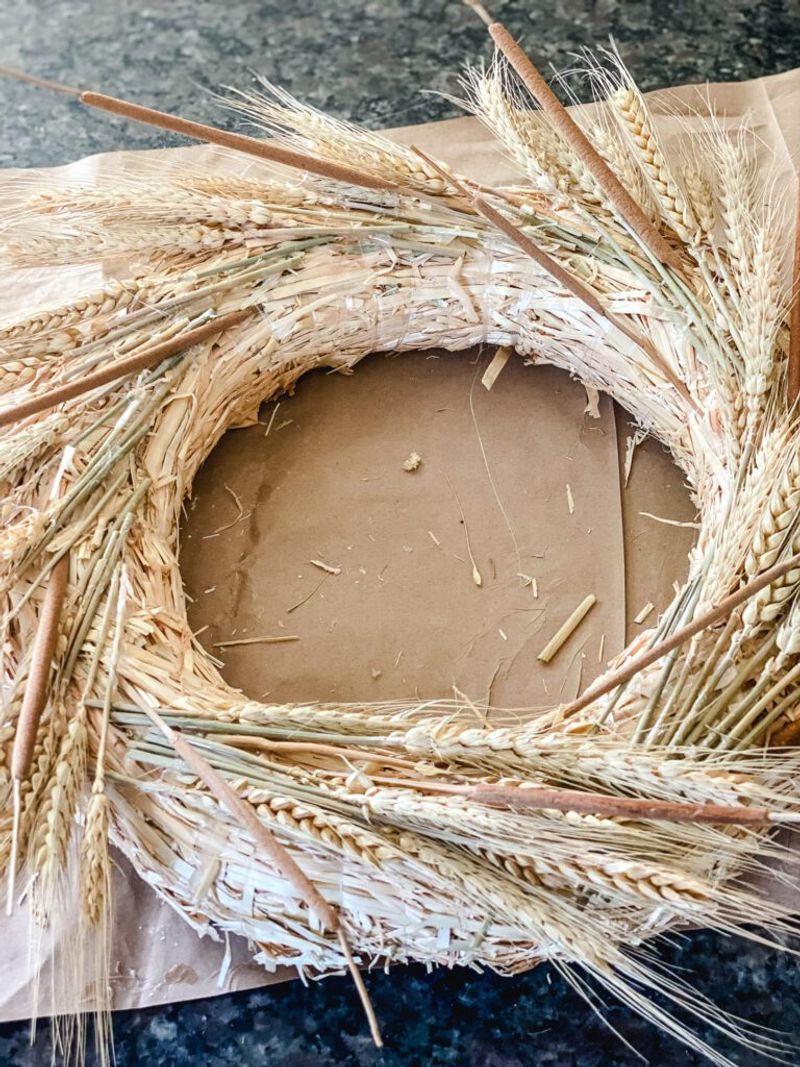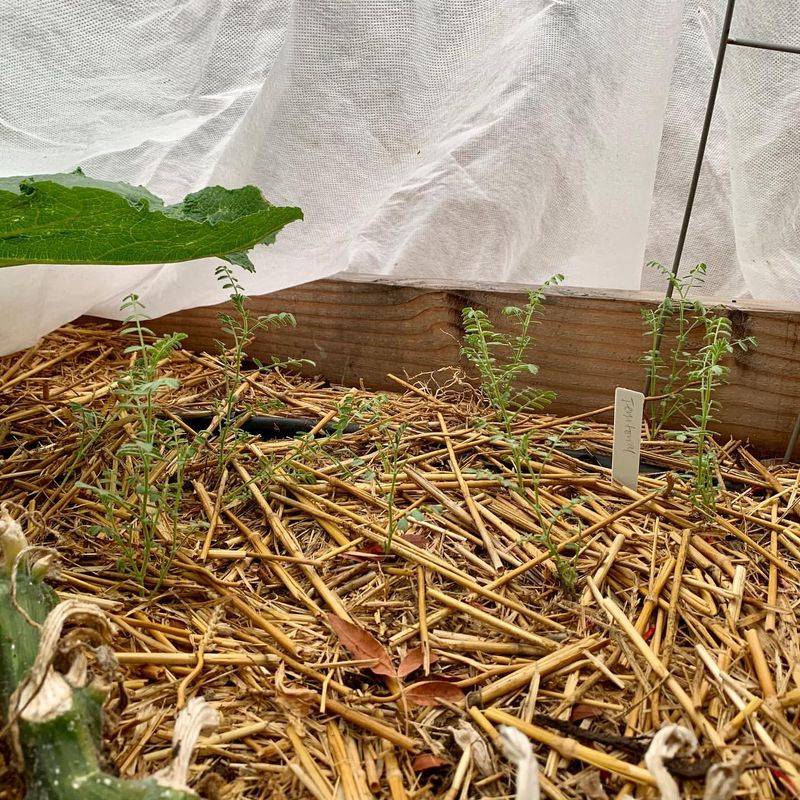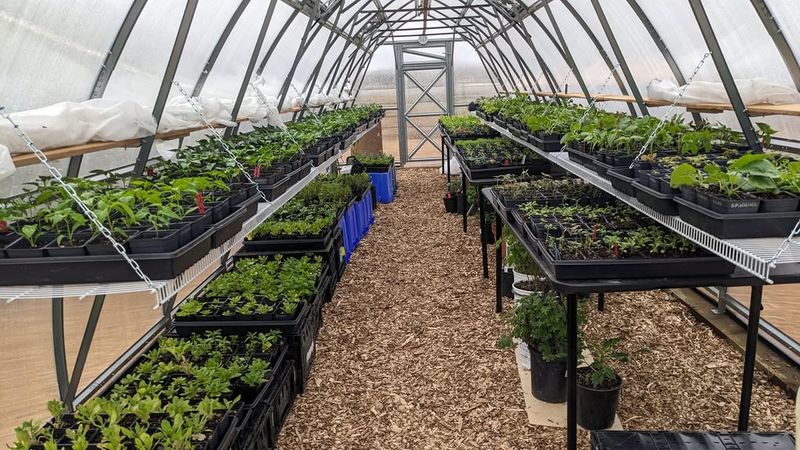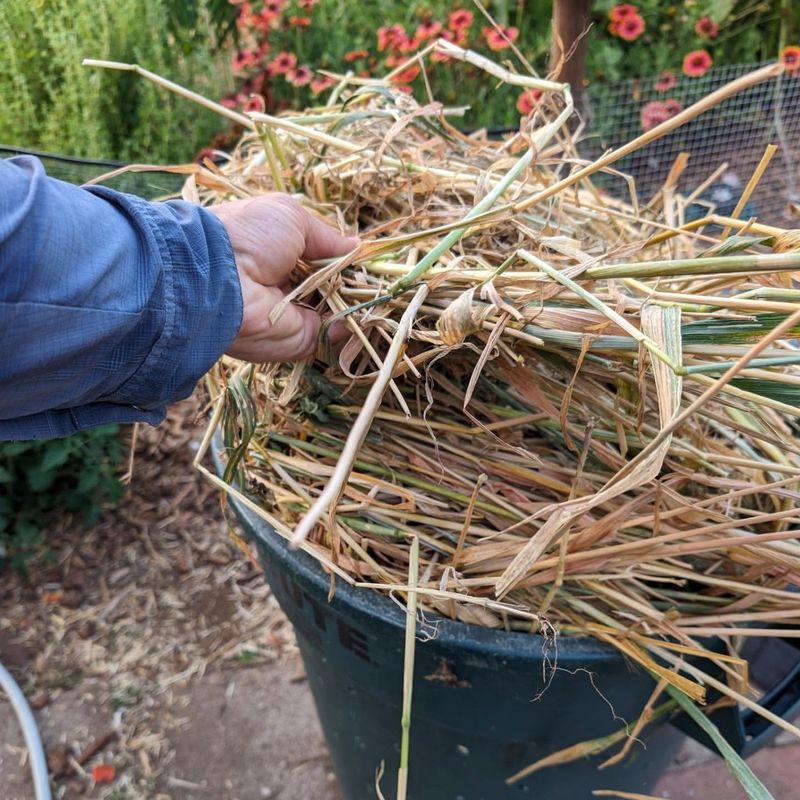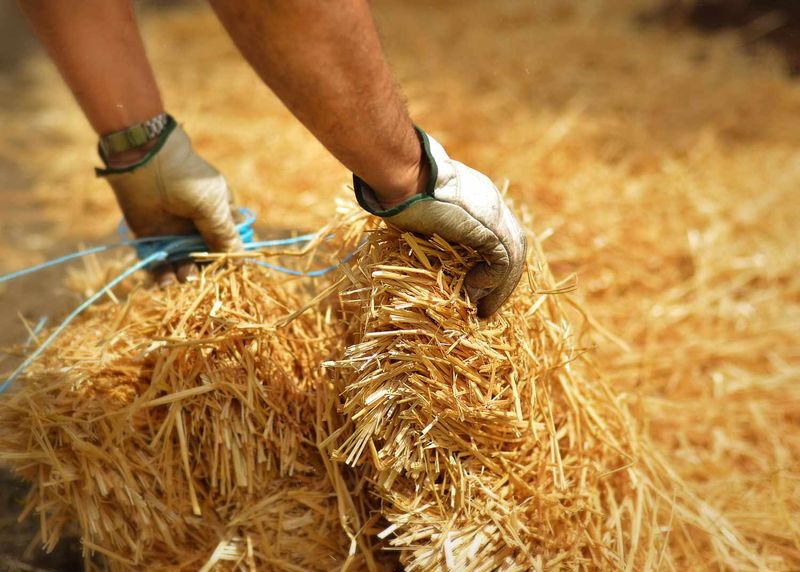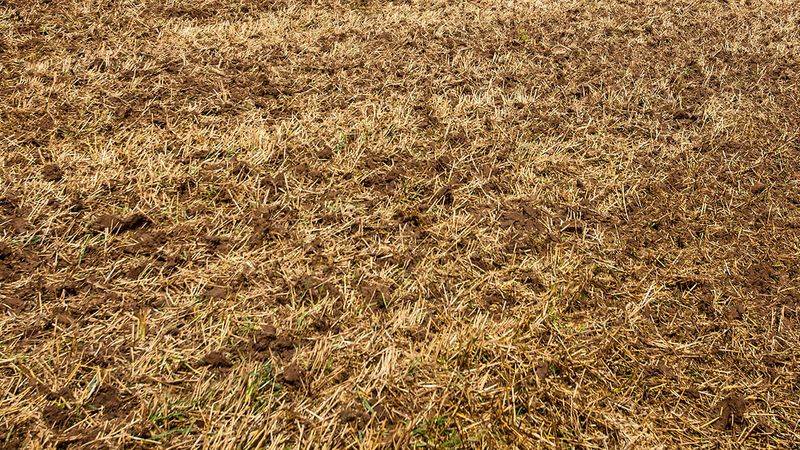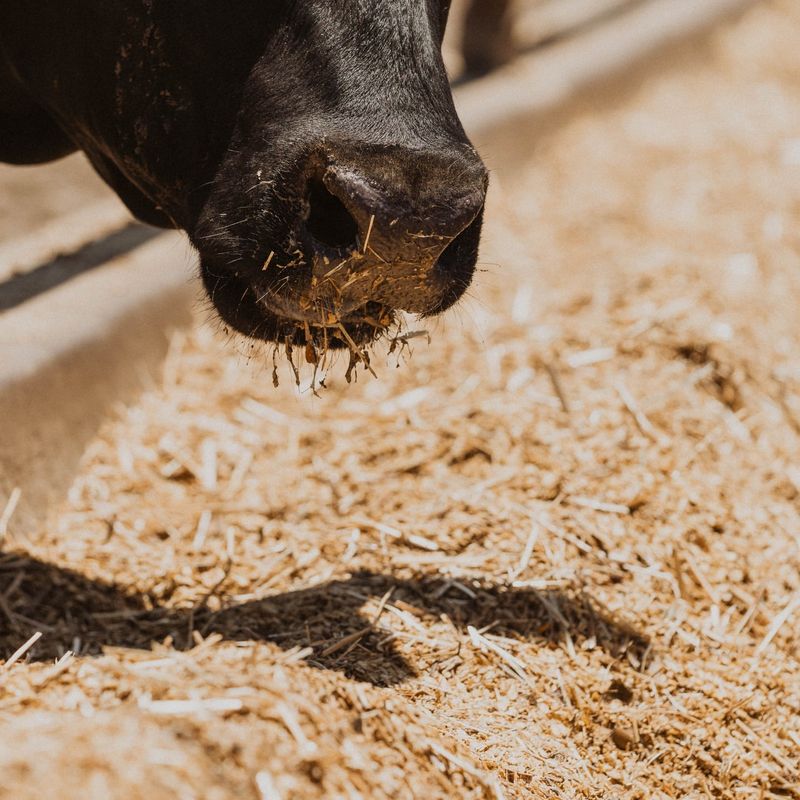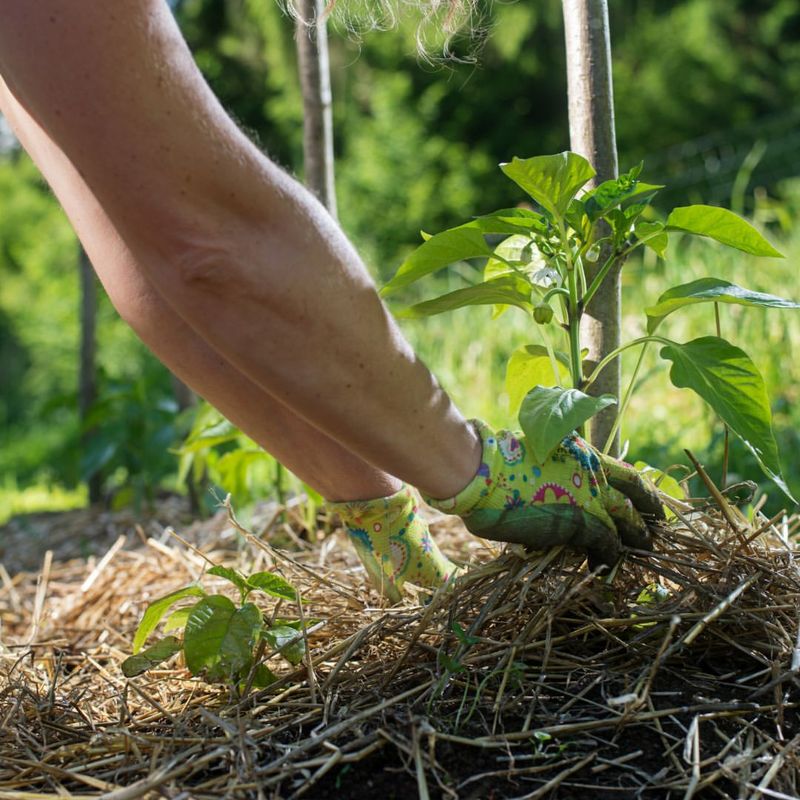Explore the exciting world of wheat straw and its versatile applications in your garden.
From mulching to composting, discover 22 ingenious ways to enhance your garden with wheat straw.
1. Wheat Straw Mulch
Incorporating wheat straw as mulch can be a game-changer for your garden. Not only does it conserve moisture, but it also suppresses pesky weeds effectively. When applying, ensure a thick layer to maximize benefits.
To prevent mold, avoid piling up against plant stems. This mulch eventually breaks down, enriching the soil. Consider replenishing the straw yearly to maintain its effectiveness and appearance.
2. Compost Booster
Adding wheat straw to your compost pile can accelerate decomposition. The straw provides carbon, balancing the nitrogen from kitchen scraps. Ensure it’s cut into smaller pieces for quicker breakdown.
Mix the straw well with other organic materials. Turn the compost regularly to aerate and speed up the process. In a few months, enjoy rich, nutrient-packed compost for your plants.
3. Pathway Cover
Transform your garden paths with a layer of wheat straw. It’s a cost-effective way to prevent muddy walkways after rain. Spread it evenly across desired areas to maintain a tidy look.
Wheat straw pathways are gentle on feet and provide a natural aesthetic. Replace the straw as needed to keep paths clear and attractive. A charming addition to any garden landscape!
4. Erosion Control
Wheat straw can be a mighty ally against soil erosion. Cover vulnerable slopes to protect the soil from washing away. Make sure the straw is well-anchored to withstand wind.
Regularly inspect and add more straw if needed. Over time, it will decompose, providing nutrients. A sustainable solution that safeguards your garden’s structure.
5. Insulation for Plants
Guard your plants against harsh weather with wheat straw insulation. It acts like a cozy blanket in winter, protecting delicate roots. Create a thick insulation layer around your plants before the first frost.
In spring, remove excess straw to allow for growth. This natural insulator will keep your garden thriving year-round. An easy and efficient way to combat temperature extremes.
6. Straw Bale Gardening
Why not try straw bale gardening for a unique approach? This method uses straw bales as raised beds for planting vegetables. Moisture retention and natural drainage are key benefits.
Before planting, condition the bales with water and fertilizer. As plants grow, the bale supports their needs and slowly decomposes. A creative and eco-friendly gardening technique indeed!
7. Animal Bedding
Wheat straw makes excellent bedding for small animals. Soft, absorbent, and comfortable, it’s perfect for chickens or rabbits. Replace regularly to maintain cleanliness and freshness.
This bedding also composts well, returning nutrients to the earth. Simple to use and environmentally friendly. Your animals will appreciate the comfort and warmth it provides!
8. Seed Germination
Enhance seed germination by using wheat straw. It keeps soil temperature consistent and retains moisture. Spread a thin layer over seeded areas for optimal results.
Monitor moisture levels and adjust the covering as needed. As seedlings grow, carefully remove excess straw. A nurturing environment for your young plants to flourish.
9. Natural Pest Deterrent
Using wheat straw in your garden can deter pests naturally. The texture and dryness are unappealing to many insects. Spread it around plants to create a barrier.
Keep an eye on pest activity and adjust straw levels as needed. This eco-friendly method offers protection without chemicals. A simple step towards a healthier garden ecosystem.
10. Frost Protection
Safeguard your garden from frost with wheat straw protection. A layer of straw shields delicate plants from cold snaps. Apply generously before temperatures drop.
As spring arrives, gradually remove excess straw. This strategy ensures plants emerge strong and healthy. A gardener’s ally against unexpected frost.
11. Weed Barrier
Combat weeds effectively with a wheat straw barrier. It blocks sunlight, preventing weed seeds from germinating. Spread a generous layer around plants for best results.
Regularly check and replenish straw as needed. This method keeps garden maintenance manageable. A natural, hassle-free way to keep weeds at bay.
12. Improving Soil Structure
Wheat straw can enhance soil structure over time. As it decomposes, it adds organic matter to your garden bed. Mix straw into soil to boost fertility.
Monitor soil health and adjust straw usage accordingly. Continual improvement leads to healthier plant growth. A sustainable practice for thriving gardens.
13. Mulching Pathways
Define your garden pathways by mulching with wheat straw. It creates clear lines and suppresses unwanted growth. Spread evenly for a neat appearance.
Pathways remain dry and comfortable to walk on. Refresh the straw as it weathers over time. A practical choice for tidy and inviting gardens.
14. Winter Mulching
Prepare your garden for winter with wheat straw mulching. It provides warmth and protection for dormant plants. Spread generously over beds before cold weather hits.
In spring, remove or incorporate into the soil. This seasonal practice ensures plants reemerge strong. An effective way to winterize and protect your garden.
15. Decorative Elements
Add charm to your garden with decorative wheat straw elements. Crafted patterns or designs can enhance visual appeal. Be creative in arranging straw to suit your style.
Straw adds a rustic and natural touch to spaces. Replace or refresh designs as desired. An artistic way to personalize your garden environment.
16. Organic Matter Addition
Incorporating wheat straw adds valuable organic matter to soil. It enriches garden beds, improving fertility and structure. Mix straw into existing soil for immediate benefits.
Monitor and continually add straw to maintain soil health. This practice supports robust plant growth. A straightforward method to nurture your garden naturally.
17. Greenhouse Insulation
Insulate your greenhouse with wheat straw for added warmth. It helps maintain stable temperatures, benefiting plant growth. Line walls and floors with a thick straw layer.
Check for dampness and replace straw as necessary. This insulation method is both simple and effective. Keep your greenhouse productive year-round with this technique.
18. Natural Fertilizer
Transform wheat straw into natural fertilizer as it decomposes. It releases nutrients, enriching your garden soil. Spread straw around plants and let nature do the work.
Monitor decomposition and replenish straw when depleted. This sustainable method supports healthy plant development. An eco-friendly option for fertilizing your garden.
19. Ground Cover
Use wheat straw as ground cover to protect your soil. It shields against erosion and prevents moisture loss. Spread evenly across exposed areas.
Check periodically and add more straw as needed. A practical measure to maintain soil quality. This approach contributes to a healthier garden environment.
20. Seedbed Preparation
Prepare your seedbed with wheat straw for improved outcomes. It stabilizes soil and retains moisture for new seeds. Spread a thin layer before sowing.
Ensure even coverage for optimal seed contact. This preparation sets the stage for successful germination. A beneficial step for starting your garden right.
21. Animal Feed
Wheat straw can supplement animal feed as a fiber-rich option. It provides roughage for livestock like cows and sheep. Introduce gradually to ensure proper digestion.
Monitor consumption and balance with other feed. This option helps maintain animal health naturally. A cost-effective supplement for your farm animals.
22. Vegetable Bed Mulching
Mulch your vegetable beds with wheat straw for optimal growth. It retains moisture and suppresses weeds among plants. Spread an even layer around vegetables.
Regular upkeep ensures continued effectiveness. This practice yields bountiful and healthy harvests. A fundamental technique for productive vegetable gardening.

